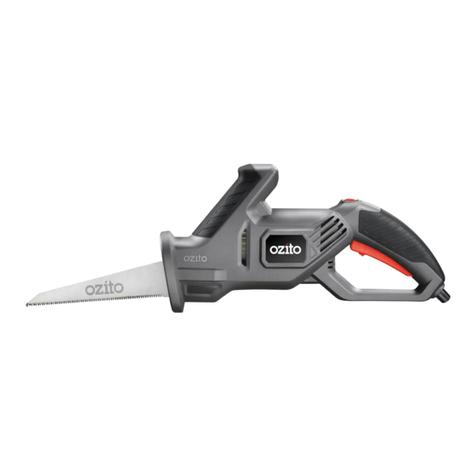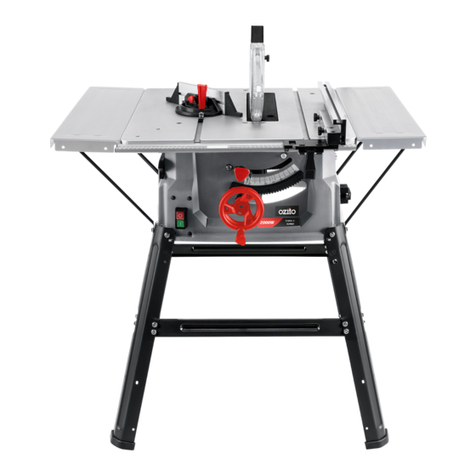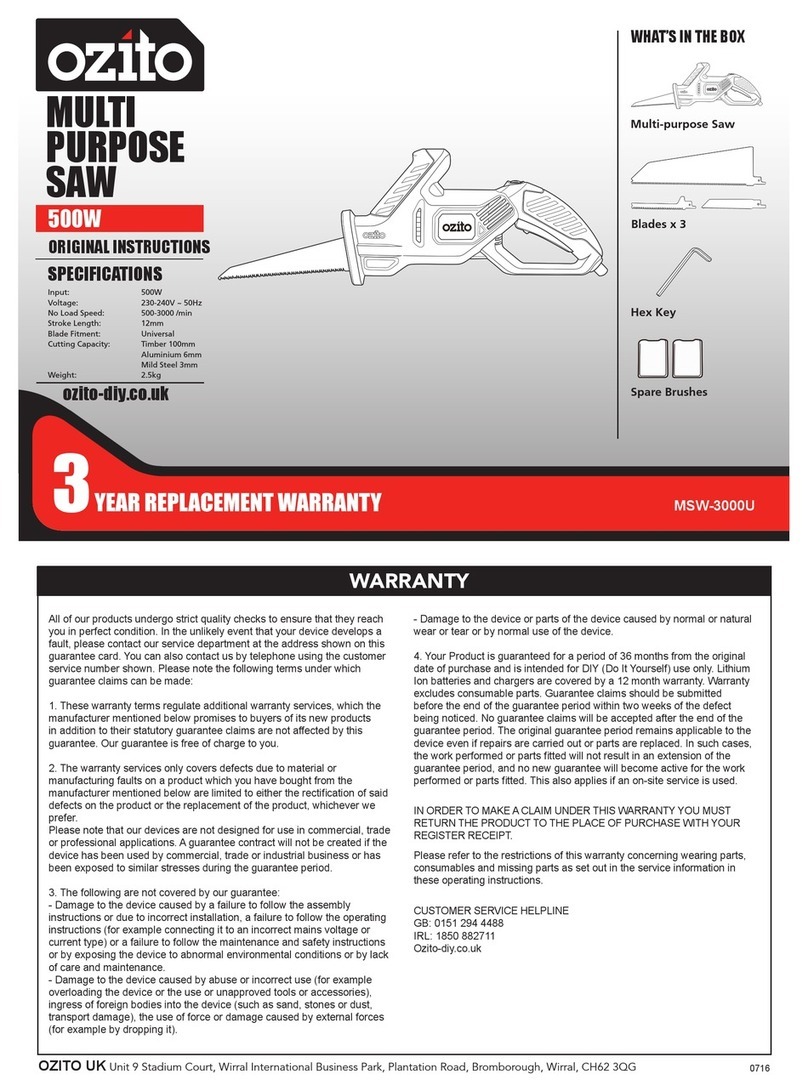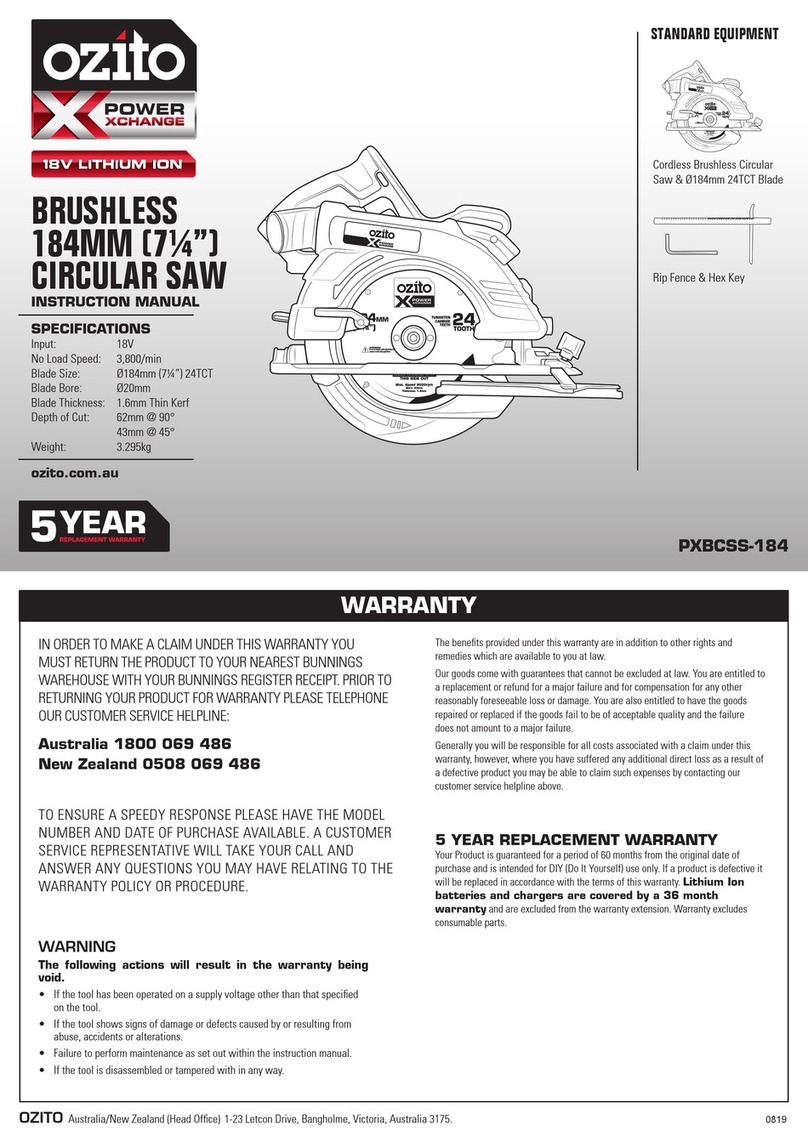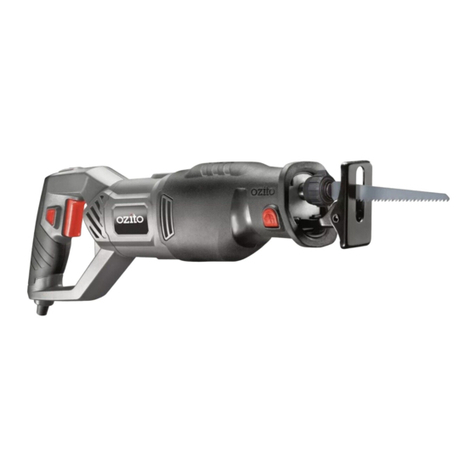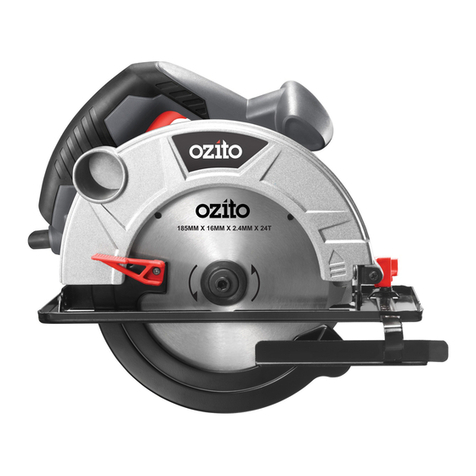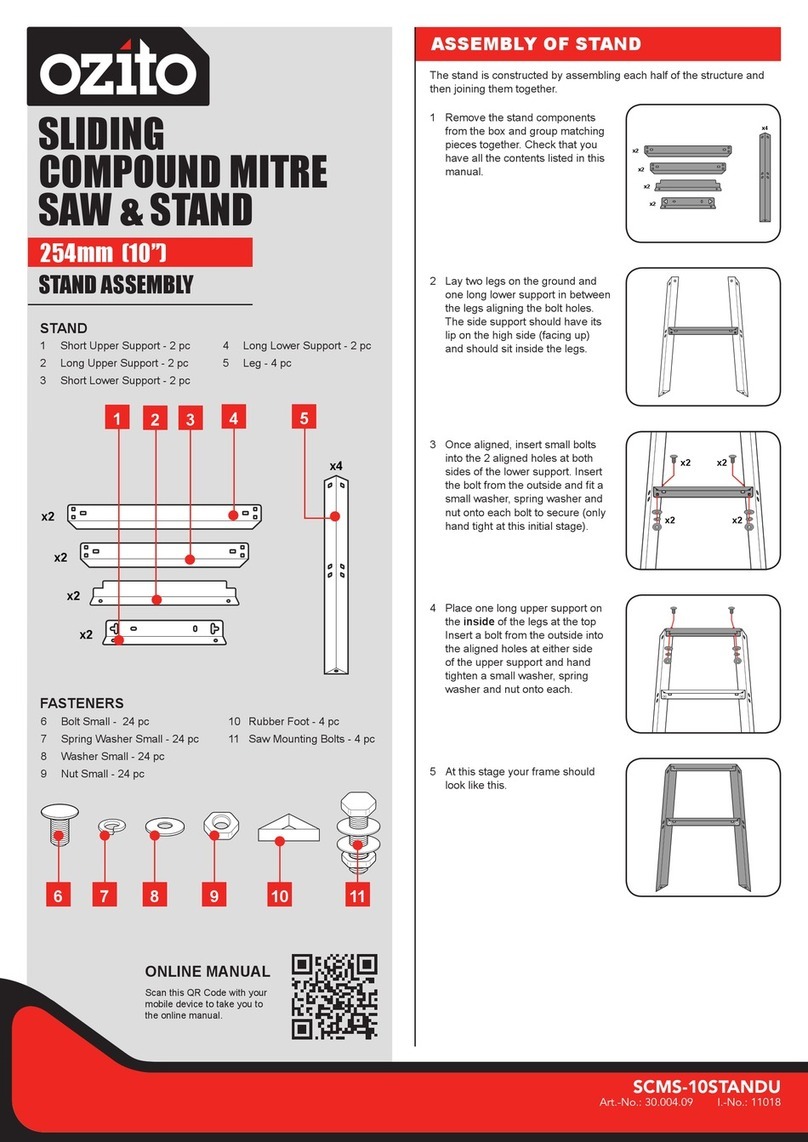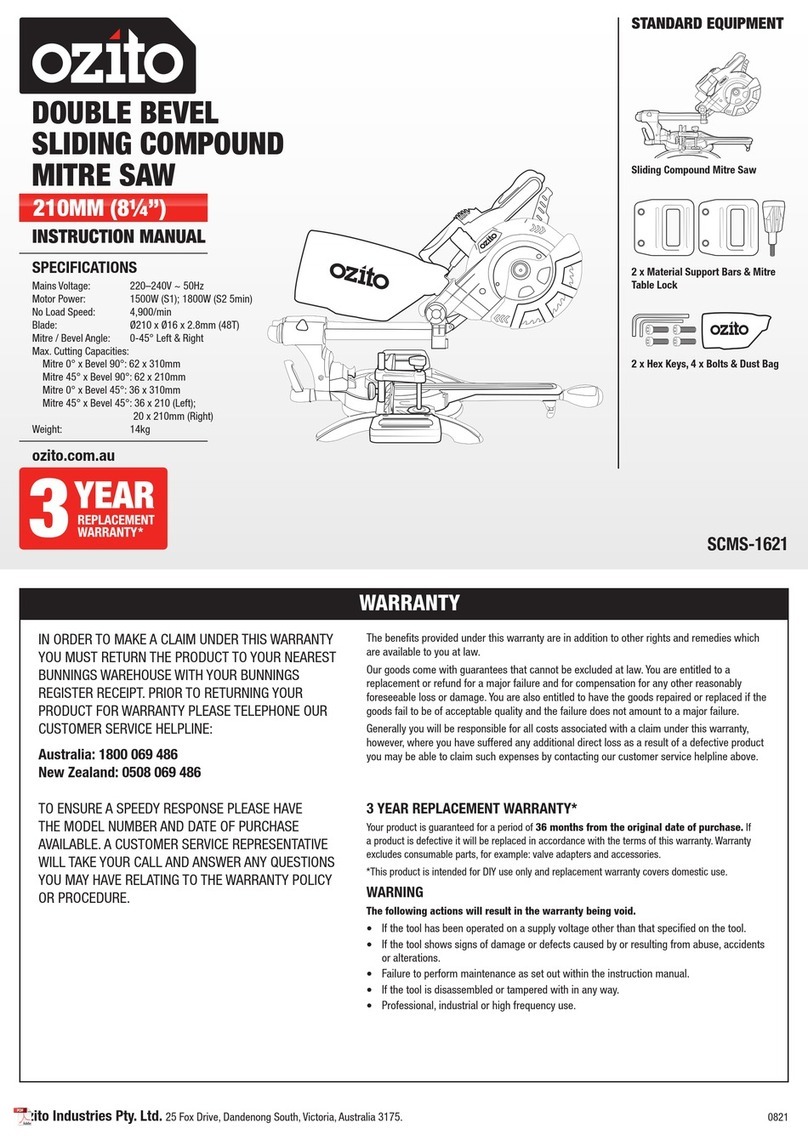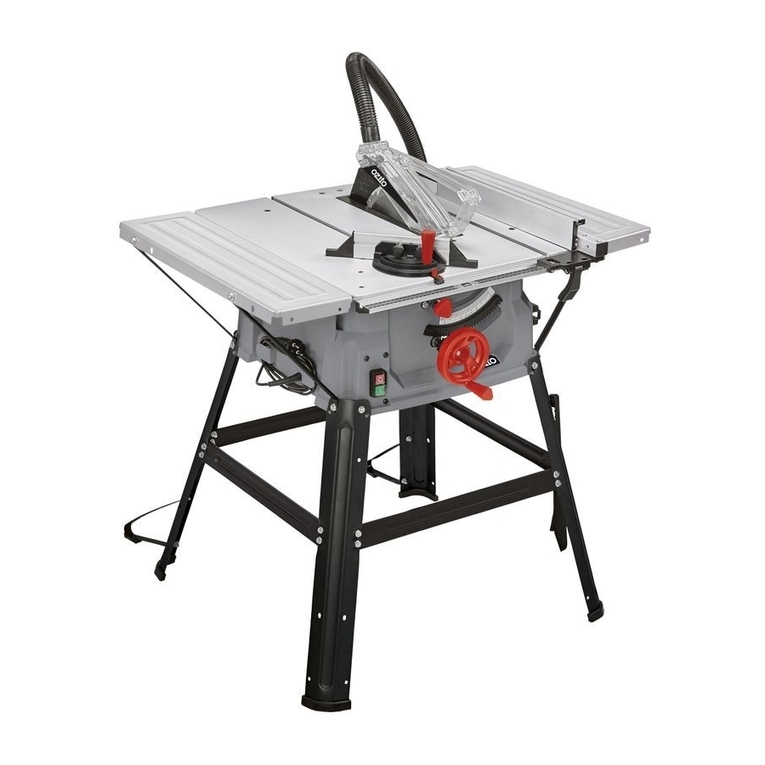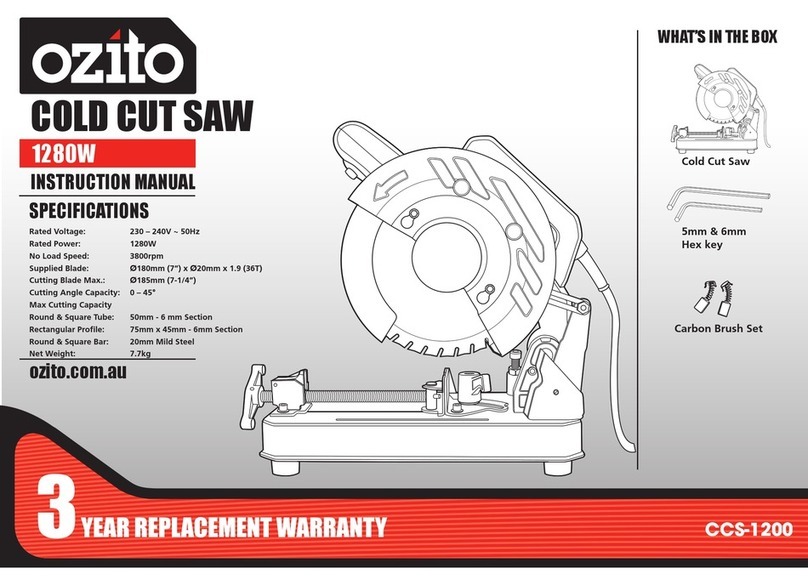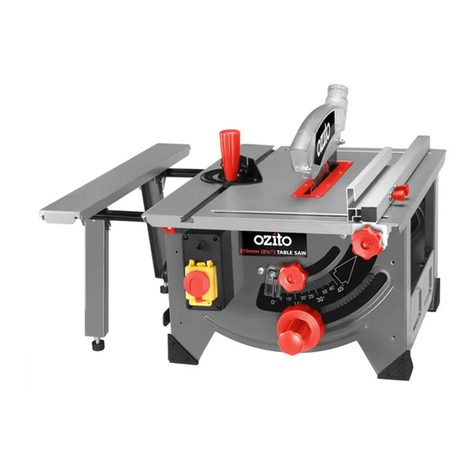
GB
- 10 -
Danger!
The equipment and packaging material are
not toys. Do not let children play with plastic
bags, foils or small parts. There is a danger of
swallowing or suffocating!
• Bandsaw
• Saw table
• Push stick
• Parallel stop
• Hexagon key 3 mm
• Hexagon key 4 mm
• Hexagon key 5 mm
• Tilt guard
• Assembly material
• Original operating instructions
• Safety information
3. Proper use
The bandsaw is designed to perform longitudinal
and cross cuts on timber or wood-type materials.
To cut round materials you must use suitable hol-
ding devices.
The equipment is to be used only for its prescri-
bed purpose. Any other use is deemed to be a
case of misuse.The user / operator and not the
manufacturer will be liable for any damage or inju-
ries of any kind caused as a result of this.
The machine is to be operated only with suitable
saw blades. To use the machine properly you
must also observe the safety regulations, the as-
sembly instructions and the operating instructions
to be found in this manual.
All persons who use and service the machine
have to be acquainted with this manual and must
be informed about the machine’s potential ha-
zards.
It is also imperative to observe the accident pre-
vention regulations in force in your area.
The same applies for the general rules of occupa-
tional health and safety.
The manufacturer shall not be liable for any chan-
ges made to the machine nor for any damage
resulting from such changes.
Even when the machine is used as prescribed
it is still impossible to eliminate certain residual
risk factors. The following hazards may arise in
connection with the machine’s construction and
design:
• Damage to hearing if ear-muffs are not used
as necessary.
• Harmful emissions of wood dust when used
in closed rooms.
• Contact with the blade in the uncovered cut-
ting zone.
• Injuries (cuts) when changing the blade.
• Injury from catapulted workpieces or parts of
workpieces.
• Crushed fingers.
• Kickback.
• Tilting of the workpiece due to inadequate
support.
• Touching the blade.
• Catapulting of pieces of timber and workpie-
ces.
Please note that our equipment has not been de-
signed for use in commercial, trade or industrial
applications. Our warranty will be voided if the
machine is used in commercial, trade or industrial
businesses or for equivalent purposes.
4. Technical data
Voltage:....................................220-240V ~ 50 Hz
Power:.......................................S2 15 min. 250 W
Ideal speed n0: ....................................1400 min-1
Blade length:......................................... 1400 mm
Blade width:................................................ 7 mm
Max. blade width:........................................ 8 mm
Blade speed:........................................900 m/min
Cutting height:................................... 80 mm / 90°
.......................................................... 45 mm / 45°
Throat: .................................................... 200 mm
Table size:......................................305 x 305 mm
Tilting range of table:............................. -2° to 45°
Workpiece size:...................... 400 x 400 x 80 mm
Weight:......................................................17,5 kg
Danger!
Sound and vibration
Sound and vibration values were measured in
accordance with EN 61029.
LpA sound pressure level ..................... 84.3 dB(A)
KpA uncertainty .............................................3 dB
LWA sound power level .......................... 96 dB(A)
KWA uncertainty .............................................3 dB
Anl_BSW_2581U.indb 10Anl_BSW_2581U.indb 10 20.01.2017 11:03:3920.01.2017 11:03:39

